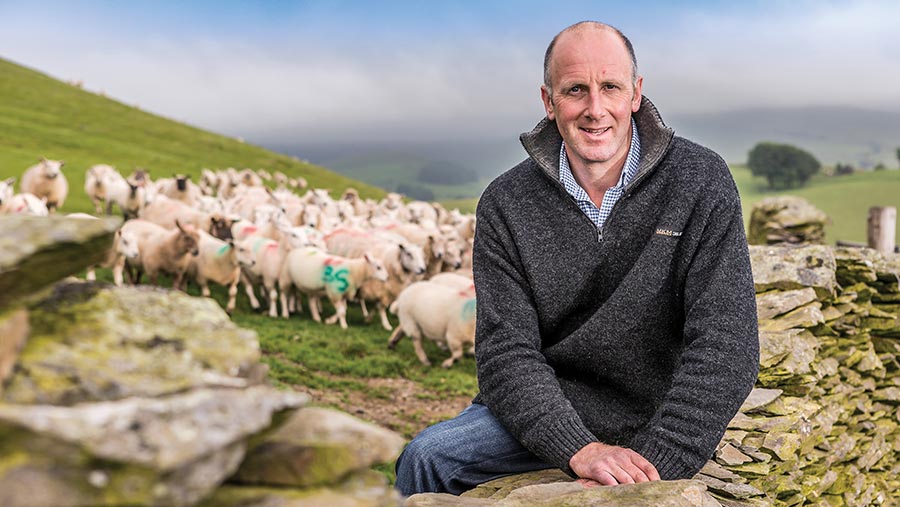Farmer Focus: Teaser rams gave us busy lambing fortnight
 Dafydd Parry Jones © Richard Stanton
Dafydd Parry Jones © Richard Stanton Another lambing season is behind us. I must admit, it hasn’t been the best one we’ve ever had.
We started off this year with a better-than-usual scanning percentage of 160%.
The twins outwintered very well on grazing, kept since mid-November when the cows were housed.
They then moved across the fields during the first seven weeks of the new year, before being housed a week before lambing at the end of February.
A group of teaser rams had been with the ewes before the new group of rams, purchased last September, was turned in during early October.
See also: Lambing shed communication – why and how to improve it
The scanner had noted that most were looking like lambing in the first cycle, indicating that the season would be short and sharp. That was exactly what we got.
This was ideal as we had lambing help organised to come in for just over two weeks, and most of the action occurred in the first half of March.
It also worked well as we didn’t have masses of the clover silage we make as a cost-effective, high-quality feed for late gestation and early lactation.
Most of the ewes could have run short of protein in their diet if they had slipped into the second cycle.
We were very fortunate to not have a single case of Schmallenberg, and joint ill was at an all-time low. But the continuous battering of the rain for endless weeks took its toll on lamb mortality.
The job of marking the lambs over the next few weeks will unfortunately reveal the extent of the situation.
April is our calving month. Calving outdoors is the ideal situation, but the empty lambing shed tends to come in handy when conditions are extremely wet and difficult – like now.
That said, we need our cows to be turned out as our slurry pit is as full as it has ever been, and that is without a drop of rainwater as it’s all under a roof.
This past winter has shown the importance of limiting rain water entering slurry pits and muckstores.
Dealing with slurry generated from the stock is a calculated management. Dealing with excessive amounts of rainwater just adds to the concern and cost.

